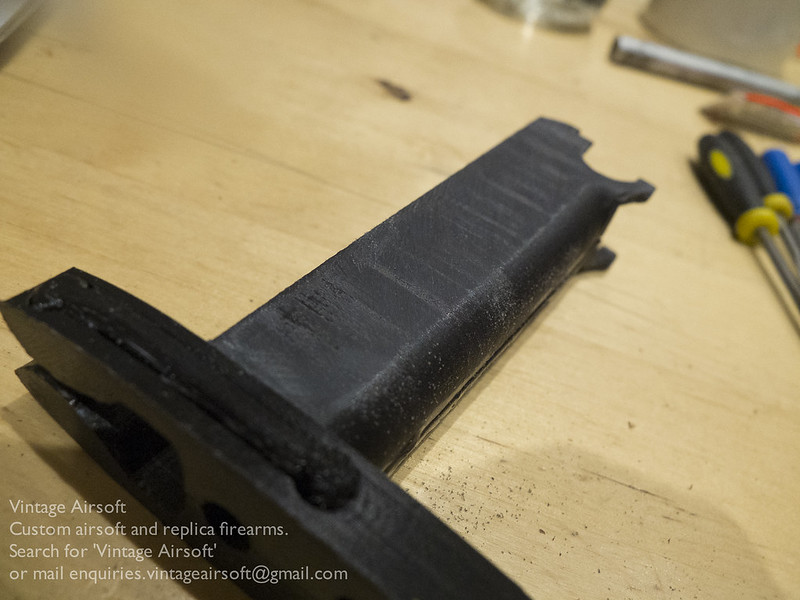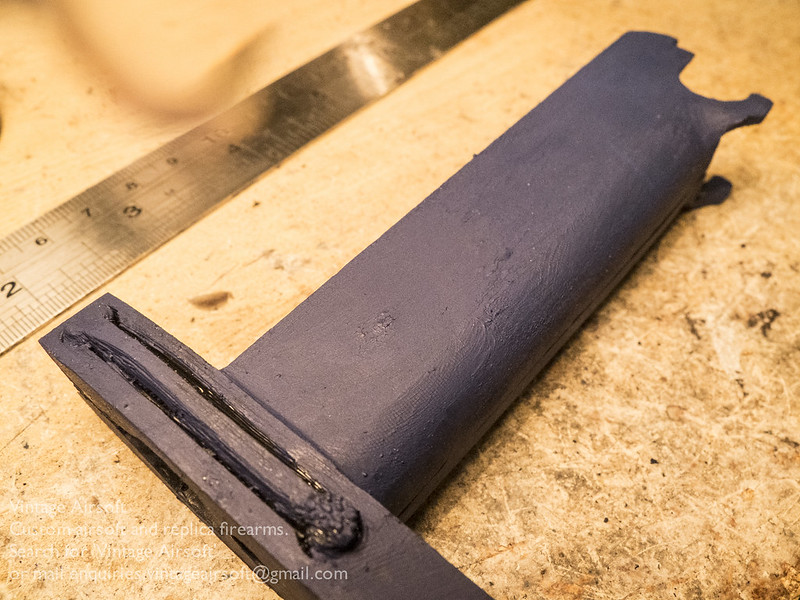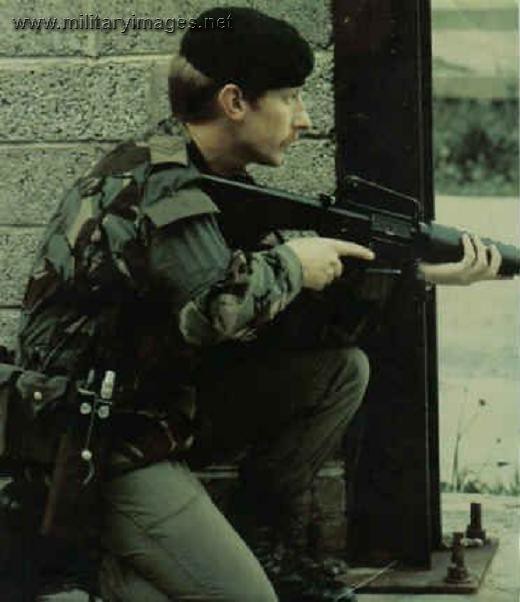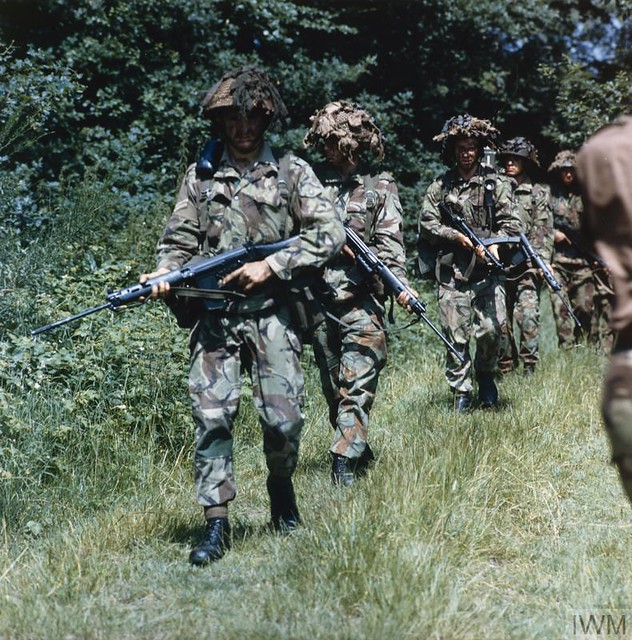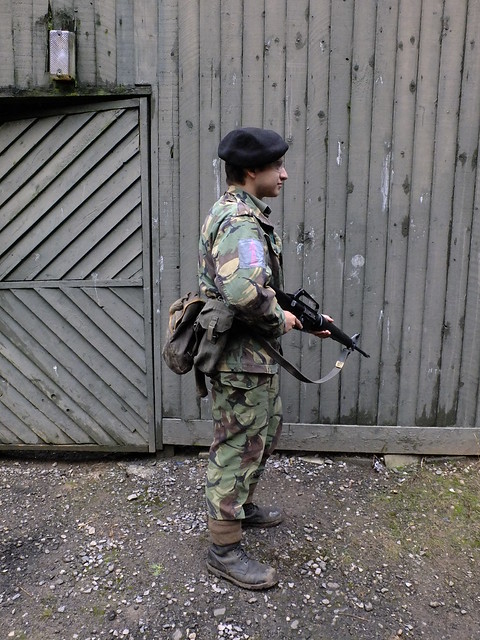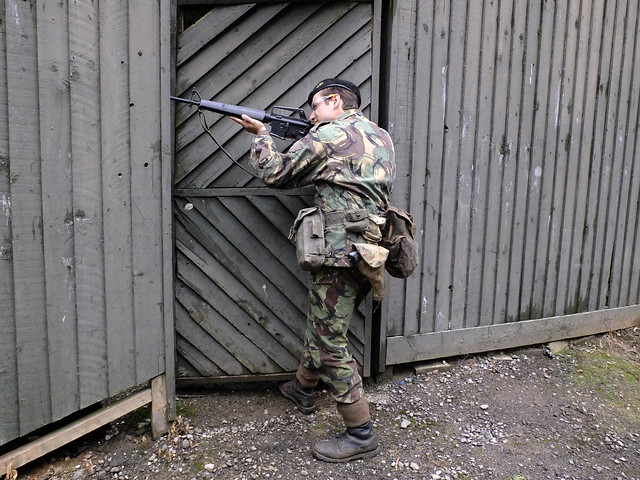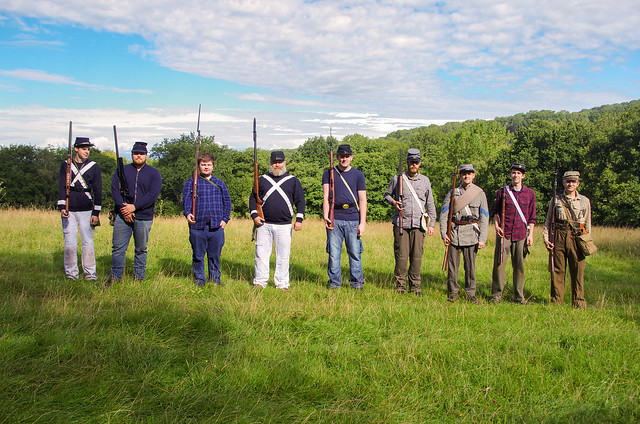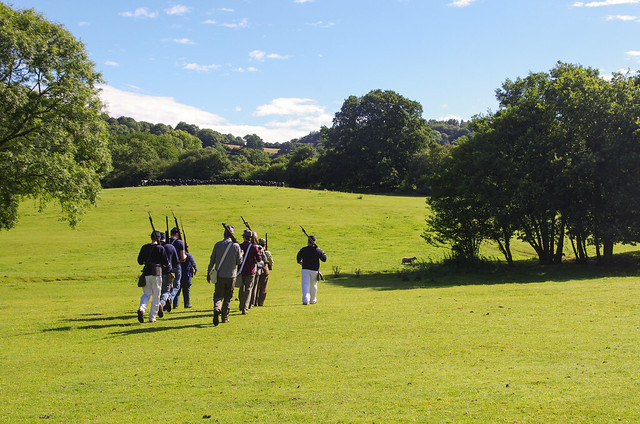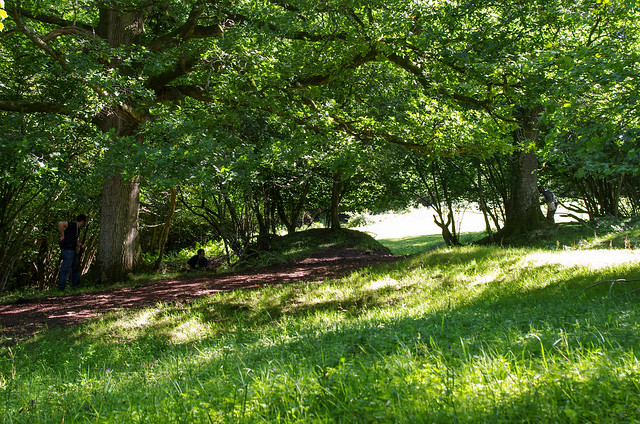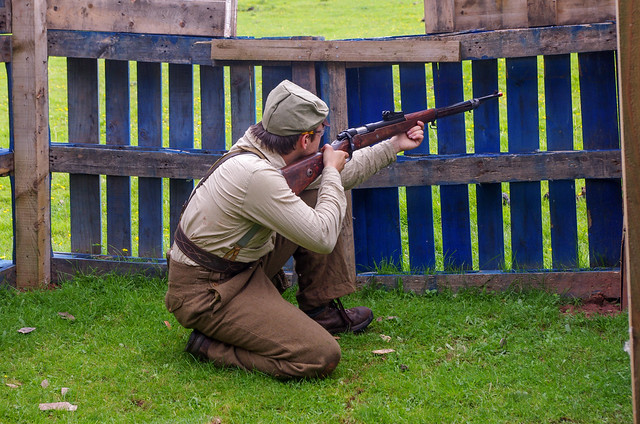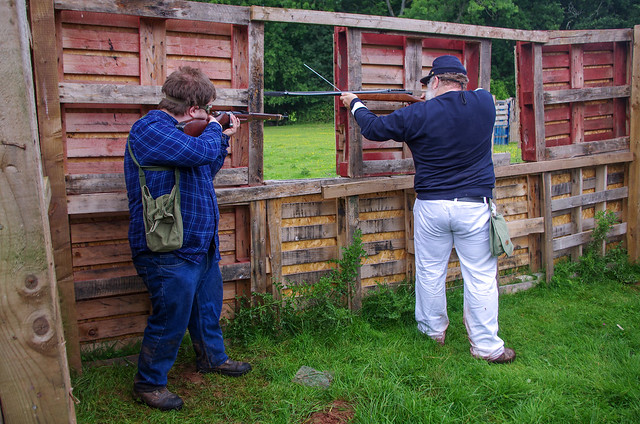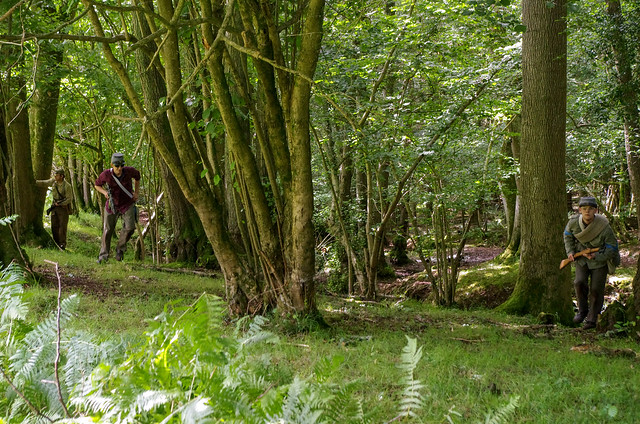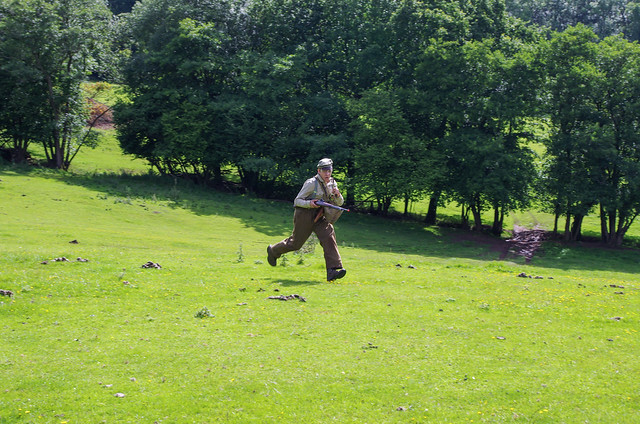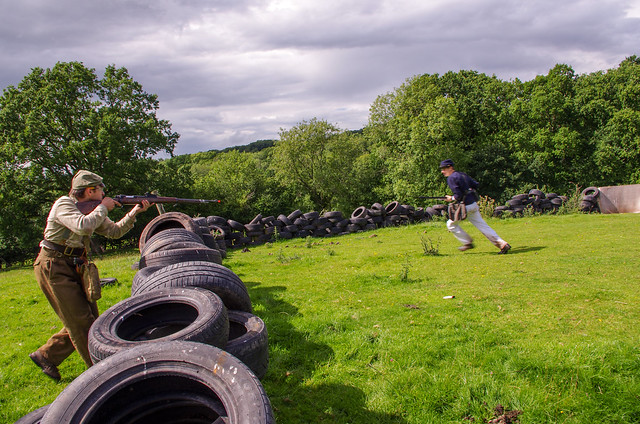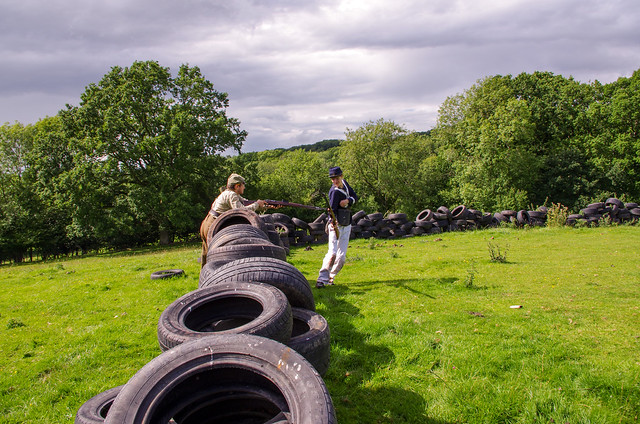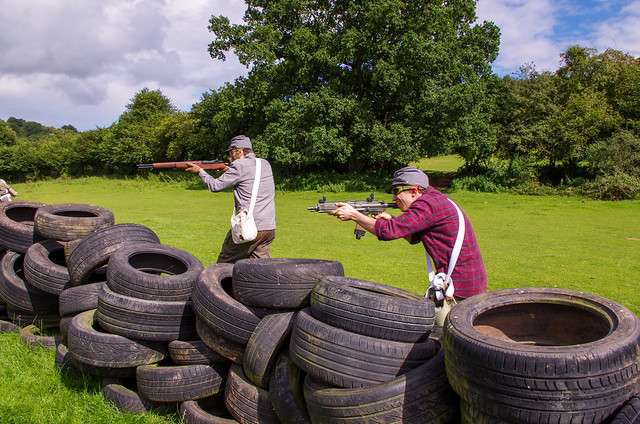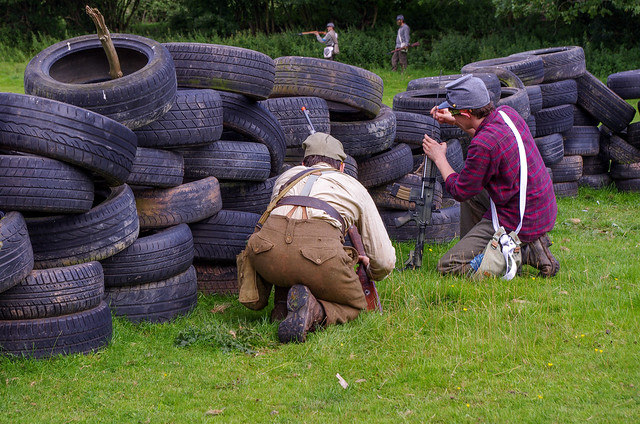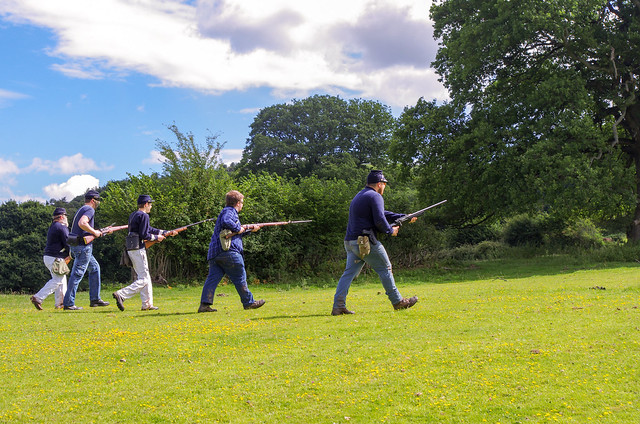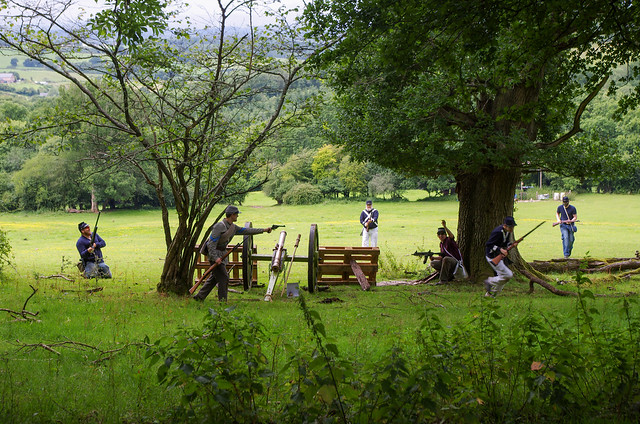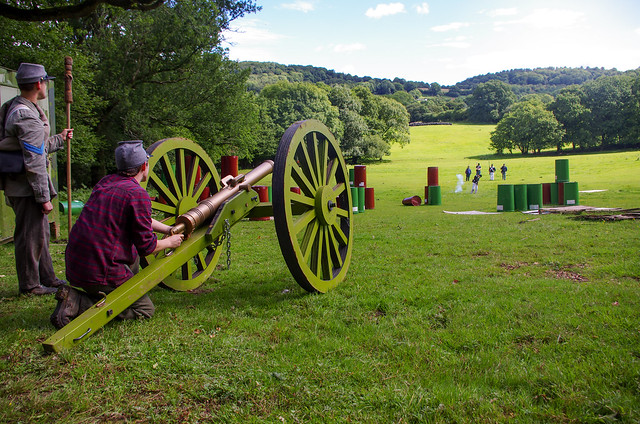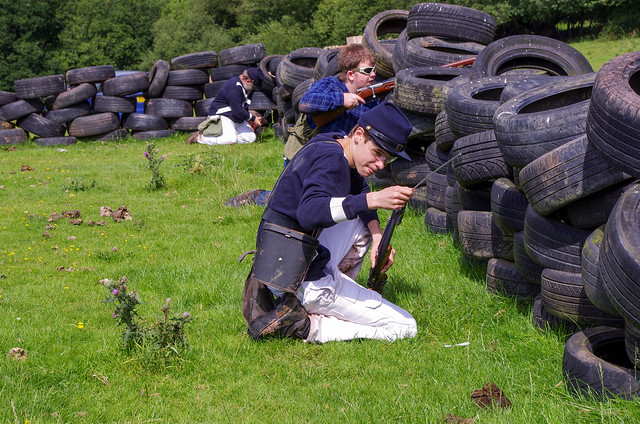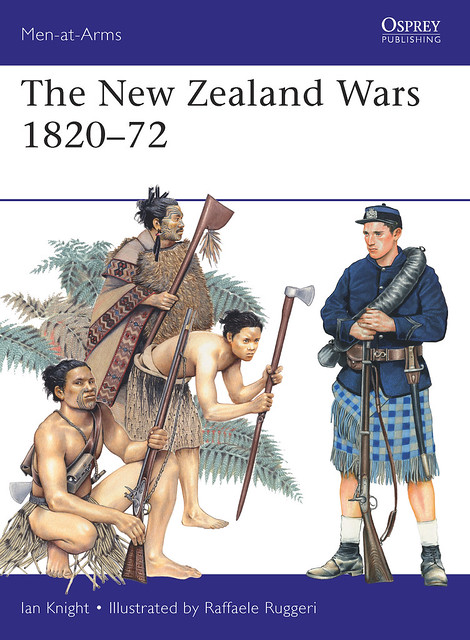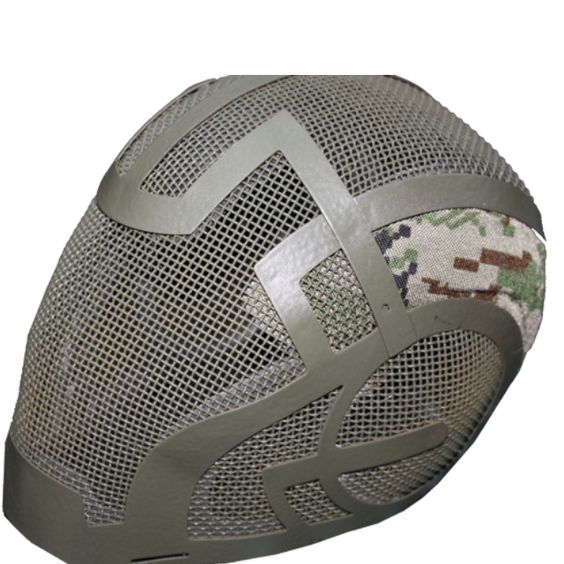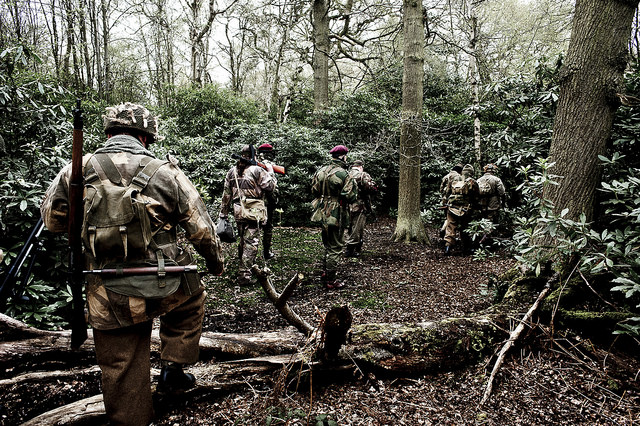This is part of a new series, written by contributors outside of Vintage Airsoft itself (though I am sure I and some friends will have to do some of our own as well). Although I edit, pictures and words are from them and they have done their own research. Accreditation is at the bottom of the article.
82nd Airborne: Operation Avalanche
A less common impression in both the reenacting and airsofting community, as most loadouts are based on the Normandy Campaign.
The equipment pictured can be used for Operation Husky (Invasion of Sicily), Operation Avalanche (Invasion of Italy), or Operation Overlord (Invasion of Normandy). As the war progressed, the standard M42 jump uniform, as well as most of the equipment was phased out in favor of the M43 field uniform.
This is the one of the earliest variants of the U.S. airborne uniform that saw combat during WWII, with most jump uniforms being reinforced after the invasion of Italy in late 1943.

Head
M1C/M2 Helmet: $99.99-345.00 (UK approx £200 from Soldier of Fortune)
The standard U.S. airborne helmet used throughout the war was the M2 “D bale” helmet. This helmet differs from the standard infantry helmet in that it uses curved fixed bales that resemble the letter “D.” This design was eventually decided to be inadequate as the bales that secured the chinstrap would often break in the field, necessitating constant repairs to helmets when returning from the field.
Due to large demands for airborne helmets, a number of standard M1 infantry helmets were converted with a jump liner and paratrooper straps to meet the demands for M2 helmets.
Eventually the M1C jump helmet was introduced to replace the M2, and added swivel bales to the helmet to prevent the bales from snapping off; however, they were not common until late 1944.
All versions of the jump helmet usually also had an airborne jump liner, which was a standard infantry liner with the addition of “A yokes” to hold the leather chinstrap. This chinstrap was used to secure the helmet to the paratrooper when jumping from aircraft.
The helmet pictured was compiled from various auctions on eBay, full M2s or M1Cs can be found at: At the Front, Jmurray and Soldier of Fortune
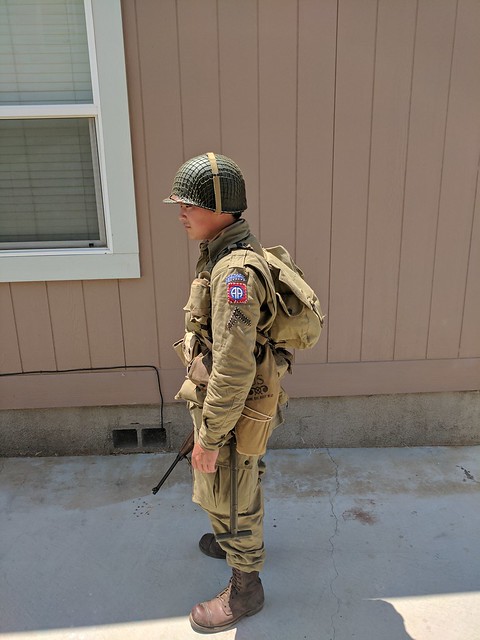
Uniform
M42 Jump Uniform: $150
The M42 jump uniform was the standard uniform for paratroopers during 1943. The uniform was later upgraded with reinforcements at the knees and elbows, and later replaced by the M43 uniform.
The uniforms are common, however At the Front has the most durable and accurate for their price.
Khaki summer shirt: $50
The khaki summer shirt was often worn by airborne and infantry under the M42 jump uniform during the summer months. While technically not permitted, this was a common practice due to the hot climate of Italy in late summer.
What Price Glory is one of the few vendors to still sell khaki summer uniforms. (the one pictured is an original)
1937 wool shirt: $50
The standard regulation shirt (not pictured) was worn under the m42 jump uniform. This is the same shirt used under the M41 jacket by infantry; however, there are several photos of paratroopers wearing khaki shirts under their M42s instead of the wool shirt.
At the Front, What Price Glory, and other vendors have reproduction wool shirts, and originals are still plentiful.
Insignia
Sewing patches: Each paratrooper was to sew on their own insignia to their uniforms, this lead to a variety in the manner in which the patches were affixed to the uniform. Some would spend time meticulously sewing intricate patterns for their insignia, like the cross stitching pictured, while others would attempt to quickly sew insignia to the uniform, creating a sloppier look to the uniform. Others, especially units like the 509th parachute infantry regiment chose not to sew on a unit insignia.
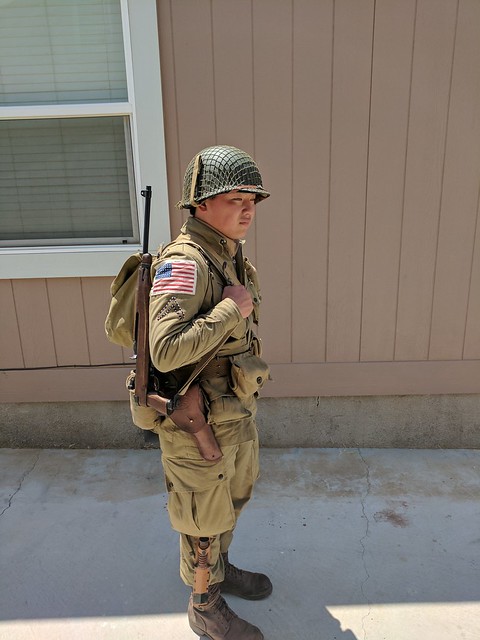
Divisional patches should be sewn onto the left shoulder, approximately the width of two fingers below the shoulder seam. American flags should also be sewn two finger widths below the right shoulder seam. Rank patches should be sewn approximately one finger width below the unit patch or halfway between the elbow and the bottom of the unit patch.
At the Front makes quality patches for uniforms, as original airborne patches are nearly impossible to find.
82nd Airborne Patch: $10
The 82nd Airborne was the first airborne division to see combat in the European theater in WWII. The division fought in Sicily, Italy, France, Holland, Belgium, and Germany.
PFC Stripes: $5
Private First Class stripes, added to denote rank of private first class.
48 Star American Flag: $5
American flags were commonly sewn on the arm of invasion forces, leading to several variants of patches or armbands to be attached to paratroopers. Often, these patches would be removed after landing, so their inclusion is not necessary.
Feet
Corcoran Jump Boots: $125-256
Jump boots were issued to U.S. paratroopers throughout WWII, and are still used today. These jump boots are taller than most other boots to secure them to the paratrooper when jumping. The boots should be polished to a shine, as this was a common sign of pride among paratroopers. WWII jump boots should be brown, and polished to a dark brown shine.
At the Front, Amazon, and most other WWII vendors sell brown Corocan Jump Boots.
Field Gear
For the invasion of Italy, all field gear should be OD3 (khaki), there should not be any OD7 (green) field gear, as OD7 was not common until D-Day.
Webbing set: (pistol belt, rigger pouches, canteen, entrenching tool) $175
The standard web gear for U.S. airborne in 1943 consisted of a 1936 pistol belt, rigger pouches which could hold four enbloc M1 Garand clips or five M1 Carbine 15 round magazines. The canteens should be stainless steel, as original aluminum canteens contain large amounts of aluminum oxide. The T-Handle entrenching tool allowed soldiers to dig foxholes, clear brush, and could be used as a weapon of last resort. In 1943, the standard T-Handle or shortened airborne T-Handle shovels would be appropriate.
Much of the web gear pictured are originals, the e-tool was from At the Front, and the rigger pouches were from Man the Line
1936 pack system: $60
The 1936 Musette bag and suspenders are an important part of any airborne impression. The system allowed the paratrooper to be able to jump while carrying a pack, and was issued throughout the war to U.S. Airborne forces.
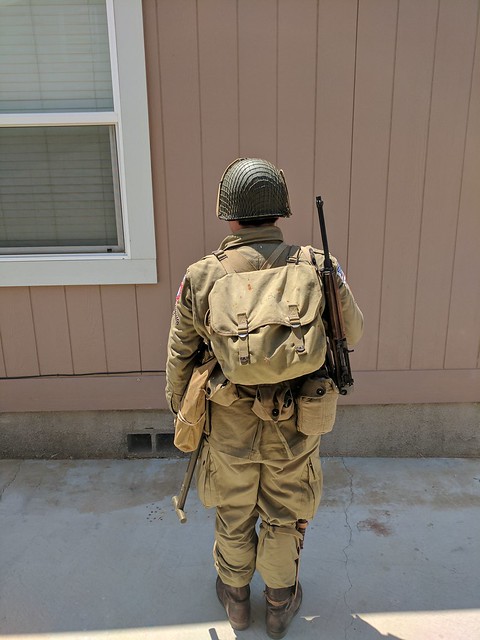
The pack and suspenders pictured are both originals.
1916 holster: $30
The 1916 holster was designed to hold the 1911 handgun, and was issued to officers, machine gun crews, and other units who were not given an M1 Garand rifle. Additionally, U.S. paratroopers often acquired 1911s from various sources and were able to keep them for the Italy jump.
The holster pictured is an original.
Gas mask bag: $20
The 82nd Airborne jumped into Sicily and Italy still using their training gas masks. These were usually discarded soon after the jump upon the realization that the Germans were not using poison gas. These training masks were replaced by the M6 gas mask and M7 rubberized gas mask bag for the Normandy invasion.
Parachute first aid pack: $14
The parachute first aid pack was a small first aid kit for the individual’s use should they be wounded in action. Soldiers were also issued a separate bandage and pouch, however during the Italy invasion, the content of the second bandage pouch were often stuffed into the M42 jacket pockets.
The one pictured is an original.
At the Front, Man the Line, What Price Glory, World War Supply, and other vendors sell quality reproduction field gear. I would recommend against buying off eBay, as reproductions are often poorly made and poorly dyed.
Weapon
M1A1 Carbine (King Arms): $350
The M1A1 Carbine was a M1 carbine with a wire folding stock to allow easier use when jumping from aircraft. The rifle was folded and placed in a scabbard secured to the parachute, and unlike the M1 Garand, could be immediately used upon landing. Carbines were usually issued to machine gun crews, officers, and radiomen; however, there is evidence that some riflemen were issued carbines.
The King Arms M1A1 is CO2 powered, full metal and real wood, giving it a similar feel and weight to the real version. Unfortunately, King Arms did not base their model off the WWII version of the M1A1, and therefore the rifle needs modifications to bring it closer to WWII specifications. Additionally, the rifle shoots at 487fps using .2 bbs, making it difficult to use at normal fields.

1911 (WE Tech): $95
The Gen3 WE Tech 1911 GI model is an affordable, reliable sidearm. The handgun shoots reliably and possesses a 15 round magazine. A very capable sidearm, and one of the few 1911s made to WWII specification.
M3 Trench Knife: $50
The M3 trench knife was issued to U.S. soldiers who did not have an M1 Garand bayonet. This knife was used as both a fighting and utility knife from 1943-1945.
Rubber knives can be found on eBay for $40, while the M6 scabbard can be found on eBay separately for $20.
Editor’s note: Other suitable main arms would of course include the M1 Garand, M1 or M1A1 Thompson. You can of course find some rubber knives in the Vintage Airsoft Etsy Store.
Vendors
There are a variety of vendors from which to source a U.S. Airborne impression, for simplicity’s sake, the links to quality vendors of reproduction equipment in the United States will be listed instead of the prices for individual items, which are subject to change at any time.
US: At the Front: www.atthefront.com
World War Supply www.worldwarsupply.com
Man the Line www.mantheline.com
US/UK: What Price Glory www.whatpriceglory.com
UK: Soldier of Fortune www.sofmilitary.co.uk
As a rule of thumb, At the Front has the highest quality reproduction uniforms and field gear, however they are more expensive. Man the Line and World War Supply have some items that are of high quality, but others that tend to fall apart quickly. What Price Glory offers a larger selection of uniforms than At the Front, but often are lower quality.
Original items will vary in price greatly, and generally sell for approximately the same price of At the Front. USThey will be the highest quality, and most accurate, but due to age, they may not be as durable as good reproduction gear.
Editor’s note: Apart from strong items like helmets or garments not exposed to the elements such as shirts, I’d personally avoid using original items in the field as they are likely to succumb to wear or loss and it’s sad to lose a piece of history! That said I wear original uniforms for airsoft myself sometimes, just bear in mind historical value.
Text by Jacob Riley
Photos by Roger Harris
Edited by Dominic Evans


